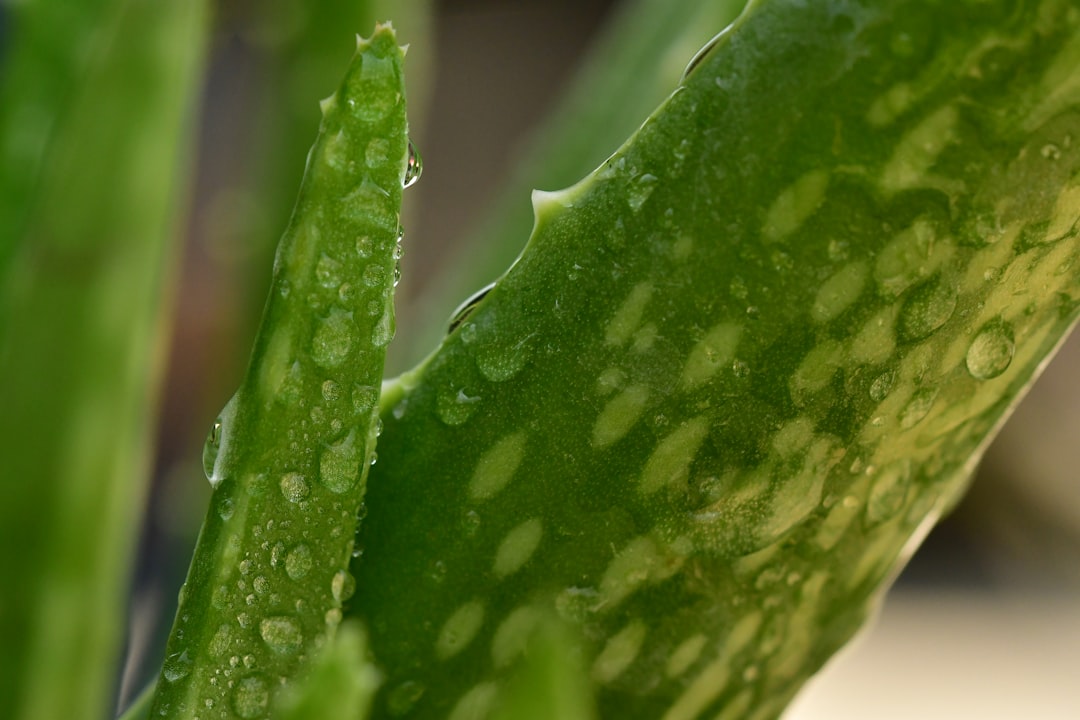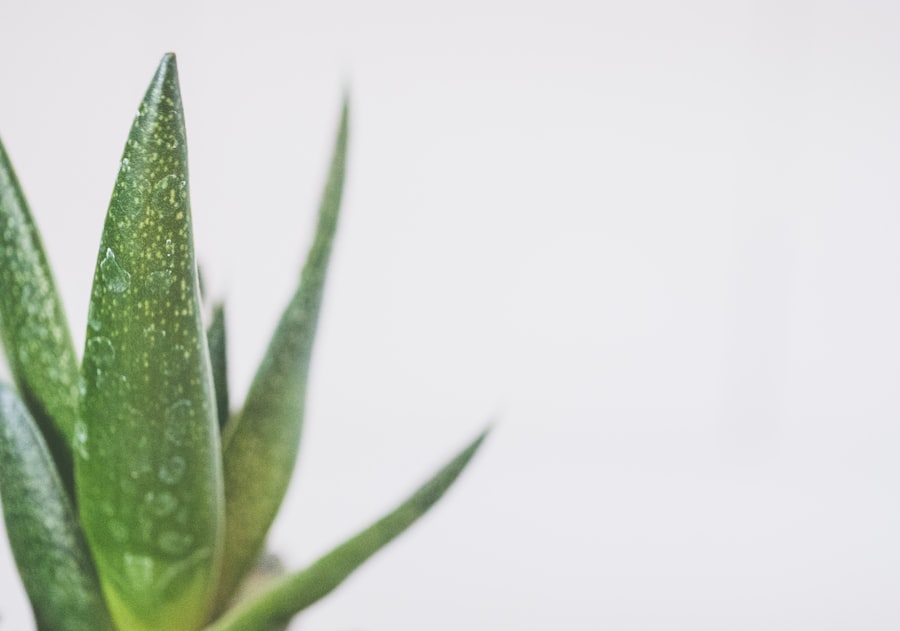Grow Your Own Aloe Vera: Tips for Planting and Care

Aloe vera is a succulent plant that has been used for centuries for its medicinal and cosmetic properties. It is native to the Arabian Peninsula but is now cultivated worldwide. The gel inside the leaves of the aloe vera plant is known for its soothing and healing properties, making it a popular ingredient in skincare products and natural remedies.
Aloe vera has a long history of use in traditional medicine. Ancient Egyptians called it the “plant of immortality” and used it to treat various ailments, including burns, wounds, and digestive issues. It was also used by ancient Greeks and Romans for its healing properties.
In addition to its medicinal uses, aloe vera is also a popular houseplant. Growing aloe vera at home has many benefits. It is easy to care for, requires minimal watering, and can thrive in a variety of conditions. Having an aloe vera plant at home also means you have access to fresh aloe vera gel whenever you need it.
Key Takeaways
- Aloe vera is a succulent plant known for its medicinal and cosmetic properties.
- Choosing the right soil is crucial for the growth and health of your aloe vera plant.
- Planting aloe vera is easy and requires minimal effort, but it’s important to follow the right steps.
- Overwatering can harm your aloe vera plant, so it’s important to water it sparingly and avoid getting water on the leaves.
- Aloe vera needs plenty of sunlight to thrive, but it’s important to protect it from direct sunlight during the hottest hours of the day.
Choosing the Right Soil for Your Aloe Vera Plant
Choosing the right soil is crucial for the health and growth of your aloe vera plant. Aloe vera plants require well-draining soil to prevent root rot and other issues caused by waterlogged soil. Sandy or sandy loam soil is ideal for aloe vera as it allows excess water to drain away quickly.
When preparing the soil for your aloe vera plant, make sure to remove any rocks or debris that could impede drainage. You can also add perlite or sand to improve drainage if needed. It’s important to avoid using heavy clay soil or potting mixtures that retain too much moisture.
How to Plant Aloe Vera: Step-by-Step Guide
When planting your aloe vera, it’s important to choose the right container. Aloe vera plants have shallow root systems, so a wide and shallow container is ideal. Make sure the container has drainage holes to prevent water from pooling at the bottom.
Before planting, prepare the plant by gently removing it from its current container. Gently loosen the roots and remove any excess soil. This will help the plant establish itself in its new container.
When planting the aloe vera in the soil, make sure to position it so that the base of the leaves is level with the top of the soil. Firmly press the soil around the plant to secure it in place.
After planting, water the plant thoroughly to help settle the soil and remove any air pockets. Allow the soil to dry out completely before watering again.
Watering Your Aloe Vera: Dos and Don’ts
| Watering Your Aloe Vera: Dos and Don’ts |
|---|
| Do water your aloe vera deeply but infrequently, allowing the soil to dry out completely between waterings. |
| Don’t overwater your aloe vera, as this can lead to root rot and other issues. |
| Do use a well-draining soil mix that allows excess water to drain away from the roots. |
| Don’t let your aloe vera sit in standing water, as this can also lead to root rot. |
| Do water your aloe vera more frequently during the growing season (spring and summer) and less frequently during the dormant season (fall and winter). |
| Don’t water your aloe vera during the dormant season unless the soil is completely dry. |
| Do use room temperature water when watering your aloe vera. |
| Don’t use cold or hot water, as this can shock the plant and damage the roots. |
Proper watering is essential for the health of your aloe vera plant. Aloe vera plants are succulents and are adapted to survive in arid conditions, so they do not require frequent watering.
It’s best to water your aloe vera deeply but infrequently. Allow the soil to dry out completely between waterings. Overwatering can lead to root rot and other issues, so it’s important not to let your aloe vera sit in water.
Signs of overwatering include yellowing leaves, mushy stems, and a foul smell. If you notice these signs, reduce watering and allow the soil to dry out completely before watering again.
Underwatering can also be detrimental to your aloe vera plant. Signs of underwatering include shriveled leaves and a wilted appearance. If you notice these signs, increase watering frequency but still allow the soil to dry out between waterings.
Providing Adequate Sunlight for Your Aloe Vera
Aloe vera plants require bright, indirect sunlight to thrive. They can tolerate some direct sunlight, but too much can cause sunburn and damage to the leaves.
Ideally, place your aloe vera plant near a south or west-facing window where it can receive bright, indirect sunlight for most of the day. If you notice the leaves turning brown or yellow, it may be a sign that your plant is getting too much sunlight. In this case, move it to a location with less direct sunlight.
On the other hand, if your aloe vera plant is not receiving enough sunlight, it may become leggy and pale. In this case, move it to a location with more sunlight or consider using artificial grow lights to supplement natural light.
Fertilizing Your Aloe Vera: What You Need to Know

While aloe vera plants can survive without fertilization, providing them with the right nutrients can promote healthy growth and enhance their medicinal properties.
When fertilizing your aloe vera plant, it’s important to use a balanced fertilizer with equal amounts of nitrogen, phosphorus, and potassium. A slow-release fertilizer is ideal as it will provide a steady supply of nutrients over time.
It’s best to fertilize your aloe vera plant during the growing season, which is typically spring and summer. Avoid fertilizing during the dormant period in winter.
When applying fertilizer, follow the instructions on the packaging and be careful not to over-fertilize. Too much fertilizer can burn the roots and damage the plant.
Pruning and Propagating Your Aloe Vera
Pruning your aloe vera plant can help maintain its shape and promote new growth. It can also prevent overcrowding and improve air circulation around the plant.
To prune your aloe vera plant, use clean and sharp pruning shears to remove any dead or damaged leaves. You can also remove any offsets or “pups” that have grown from the base of the plant. These offsets can be propagated to grow new aloe vera plants.
To propagate an offset, gently remove it from the parent plant and allow it to dry for a few days. Once it has formed calluses, plant it in a well-draining soil mixture and water sparingly until it establishes roots.
Common Pests and Diseases Affecting Aloe Vera and How to Prevent Them
Aloe vera plants are generally resistant to pests and diseases, but they can still be affected by certain issues. Common pests that can affect aloe vera include mealybugs, aphids, and spider mites. These pests can be controlled by using insecticidal soap or neem oil.
Aloe vera plants can also be susceptible to fungal diseases such as root rot and leaf spot. To prevent these issues, make sure to provide adequate drainage and avoid overwatering. If you notice any signs of disease, remove the affected leaves or plants to prevent further spread.
Harvesting and Using Aloe Vera Gel for Health and Beauty
Harvesting aloe vera gel from your plant is a simple process that can provide you with a natural remedy for various health and beauty concerns.
To harvest the gel, select a mature leaf from the outermost part of the plant. Use a sharp knife to cut the leaf as close to the base as possible. Allow the yellow sap to drain out for a few minutes before rinsing the leaf under running water.
To extract the gel, use a spoon or knife to scrape out the clear gel from the leaf. Store the gel in an airtight container in the refrigerator for up to one week.
Aloe vera gel can be used topically to soothe sunburns, moisturize dry skin, and promote wound healing. It can also be ingested to aid digestion and boost the immune system.
Tips for Successful Aloe Vera Planting and Care
Growing and caring for aloe vera at home can be a rewarding experience. By choosing the right soil, providing adequate sunlight, watering properly, and fertilizing when needed, you can ensure the health and growth of your aloe vera plant.
Remember to prune your plant regularly to maintain its shape and propagate new plants from offsets. Keep an eye out for common pests and diseases and take preventive measures to keep your plant healthy.
Harvesting aloe vera gel from your plant can provide you with a natural remedy for various health and beauty concerns. Use the gel topically or ingest it to enjoy its many benefits.
With proper care and attention, your aloe vera plant will thrive and provide you with fresh aloe vera gel for years to come. Enjoy the beauty and benefits of this versatile plant in your home.
If you’re interested in learning more about planting and caring for an aloe vera plant, you might find this article from Lawn World helpful. It provides a comprehensive guide on how to successfully grow and maintain aloe vera plants in your garden or indoor space. From choosing the right soil and pot to watering and sunlight requirements, this article covers all the essential tips and tricks. Check it out here for expert advice on cultivating your very own aloe vera plant.
FAQs
What is an Aloe Vera plant?
An Aloe Vera plant is a succulent plant species that belongs to the genus Aloe. It is known for its medicinal properties and is commonly used in various skincare and health products.
What are the benefits of planting an Aloe Vera plant?
Planting an Aloe Vera plant can provide various benefits such as improving air quality, reducing stress, and providing a natural source of aloe gel for various medicinal and cosmetic purposes.
What are the ideal growing conditions for an Aloe Vera plant?
An Aloe Vera plant thrives in warm and dry conditions with plenty of sunlight. It requires well-draining soil and should be watered sparingly.
How do I plant an Aloe Vera plant?
To plant an Aloe Vera plant, choose a pot with drainage holes and fill it with well-draining soil. Place the plant in the pot and water it sparingly. It is important to avoid overwatering as this can cause root rot.
How do I care for an Aloe Vera plant?
To care for an Aloe Vera plant, ensure that it receives plenty of sunlight and is watered sparingly. It is also important to avoid over-fertilizing and to repot the plant every few years.
Can I propagate an Aloe Vera plant?
Yes, an Aloe Vera plant can be propagated by removing the offsets or “pups” that grow from the base of the plant and planting them in a separate pot.



